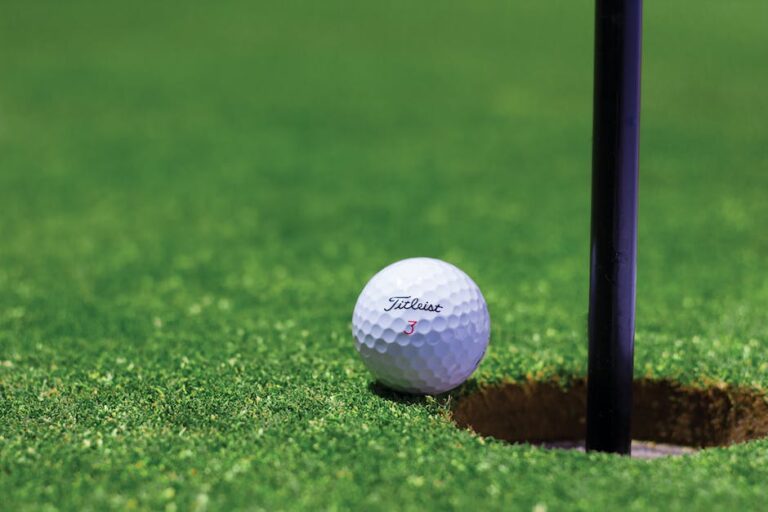Disc Golf Handicap: What It Is and How to Calculate It
If you’re new to the sport of disc golf, you may have heard the term “handicap” thrown around but aren’t quite sure what it means. In simple terms, a disc golf handicap is a way to level the playing field between players of different skill levels.
Just like in golf, disc golf has a rating system called the Player Rating (PR) which takes into account how well a player performs in relation to other players. A handicap is calculated using a player’s PR and is added to their total score to determine their net score.
For example, if two players have a total score of 50 on a course, but one player has a handicap of 3 and the other has a handicap of 10, the player with the lower handicap wins because their net score is lower (47 vs 40, respectively).
Benefits of having a handicap
One of the major benefits of having a disc golf handicap is that it allows players of different skill levels to compete fairly against one another. Without a handicap system in place, players with higher skill levels would consistently dominate those with less experience, making the sport less enjoyable for everyone involved.
Additionally, tracking your disc golf handicap allows you to see how you’re improving over time. As you practice and play games, your PR will change, and your handicap will adjust accordingly.
Having a handicap also adds an element of strategy to the game. Players can adjust their play style based on their handicap, such as taking more aggressive shots if they have a larger handicap or playing it safe if they have a smaller handicap.
Overall, having a disc golf handicap is an essential part of the sport for players of all skill levels. It ensures fair competition, allows for tracking progress, and adds strategy to the game.
How to calculate your handicap
To calculate your disc golf handicap, you’ll need two pieces of information: your Player Rating (PR) and the course rating. Your PR is typically found on your PDGA (Professional Disc Golf Association) account or can be found on the course leaderboard if the course is rated by the PDGA. The course rating is a measure of the difficulty of the course and is also typically found on the PDGA website.
Once you have both pieces of information, you can use the following formula to calculate your handicap:
Handicap = (Course Rating – PR) x (50 / Course Slope)
The resulting number will be added to your total score to determine your net score.
Understanding course and player ratings
Course and player ratings play a significant role in calculating disc golf handicaps. The course rating takes into account the length and difficulty of the course, while the player rating reflects the player’s relative skill level compared to other players.
The course rating is calculated based on the difficulty level of each hole, the distance of the holes, and the terrain. This rating system takes into account the fact that some holes are more challenging than others and adjusts the rating accordingly.
Player ratings are calculated based on past performance in sanctioned events. The PDGA collects data on each player’s performance and assigns a rating based on their average score in relation to other players.
Overall, understanding course and player ratings is critical to calculating your disc golf handicap accurately. It allows for fair competition and ensures players are competing on a level playing field.

Tips for improving your handicap
Improving your disc golf handicap requires practice and dedication. Here are a few tips to help you improve your game and lower your handicap:
-
Practice regularly: The more you play, the better you’ll get. Try to practice on courses with varying degrees of difficulty to challenge yourself and improve your skills.
-
Focus on accuracy and control: In disc golf, accuracy is more important than distance. Work on throwing accurately, rather than as far as you can.
-
Work on your putting: Putting is where many players lose strokes. Practicing your putting can help you lower your score significantly.
-
Learn to read the course: Understanding the terrain and wind conditions can help you make better shots and improve your overall game.
-
Experiment with different discs: Different discs have different flight paths and characteristics. Experimenting with different discs can help you find the perfect one for your game.
-
Play with better players: Playing with more experienced players can help you improve your game and learn new techniques and strategies.
By following these tips, you can improve your disc golf game and lower your handicap.
Importance of regularly updating your handicap
Finally, it’s essential to regularly update your disc golf handicap. As you improve your skills, your PR will change, and your handicap will need to be adjusted accordingly. Failing to update your handicap can lead to unfair competition and inaccurate scores.
The PDGA updates player ratings every two weeks, and players should use their updated PR to calculate their handicap regularly. Keeping your handicap up-to-date allows for fair competition and ensures that players are competing fairly against each other.
In conclusion, calculating and tracking your disc golf handicap is an essential part of the sport. It allows for fair competition, helps players track their progress, adds strategy to the game, and ensures that players of all skill levels can compete on a level playing field.







